Next 8th edition, 12th to 18th december 2016 | Español

![]() JAPAN MEDIA ARTS
JAPAN MEDIA ARTS
![]() FESTIVAL
FESTIVAL
![]()
![]() ARS ELECTRONICA
ARS ELECTRONICA
![]()
![]() ART FUTURA
ART FUTURA
![]()
![]() MUNDOS DIGITALES
MUNDOS DIGITALES
![]()
![]() MIDEN
MIDEN
![]()
![]() NOW & AFTER Moscow
NOW & AFTER Moscow
![]()
![]() Media DOME
Media DOME
![]()
![]() FEM Link-Art
FEM Link-Art
![]()
![]() CINEWEST. Sydney
CINEWEST. Sydney
![]()
![]() DIGITAL LANDSCAPE
DIGITAL LANDSCAPE
![]() & Programa Curators
& Programa Curators
![]() - TIME is Love
- TIME is Love
![]()
![]() - LIMA. Peru
- LIMA. Peru
![]()
![]() - Argentina
- Argentina
![]()
![]() MADE IN CANARIAS
MADE IN CANARIAS
![]()
![]() DIGITAL IMAGE
DIGITAL IMAGE
![]() Videoart
Videoart
![]() Videodance
Videodance
![]() Shortfilm/Film/3D
Shortfilm/Film/3D
![]() Web Film
Web Film
![]() Animation
Animation
![]()
![]() Art Science Innovation
Art Science Innovation
![]() Artificial life
Artificial life
![]() Software art
Software art
![]() Trangenic art
Trangenic art
![]() Generative art
Generative art
![]() Bioart
Bioart
![]() Nanotechnology
Nanotechnology
![]() Geospatial storytelling
Geospatial storytelling
![]() Videogames
Videogames
![]() Robotic
Robotic
![]() Free Software
Free Software
![]() 2D & 3D Animation
2D & 3D Animation
![]() Net-art
Net-art
![]() Digital Communities
Digital Communities
![]() Social Networks
Social Networks
![]() Blog, videoblog
Blog, videoblog
![]() Apps developments
Apps developments
![]() Mobil platforms
Mobil platforms
![]() Data Visualization
Data Visualization
![]() Mapping
Mapping
![]() Telepresence actions
Telepresence actions
![]()
![]() about us
about us
![]()
![]() sponsors &
sponsors &
![]() collaborators
collaborators
![]()
![]() venue´s photos
venue´s photos
![]()
![]() place
place
![]()
![]()
![]() event 2009
event 2009
![]()
![]() event 2010
event 2010
![]()
![]() event 2011
event 2011
![]()
![]() event 2012
event 2012
![]()
![]() event 2013
event 2013
![]()
![]() event 2014
event 2014
![]()
![]() event 2015
event 2015
![]()
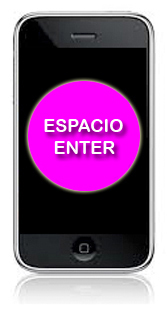
ART SCIENCE INNOVATION
- Artificial Life
- Software art
- Transgenic art
- Generative art
- Bioart
- Nanotechnology
- Geospatial storytelling
- Videogamess
- Robotic
- Open Source
- 2D & 3D Animation
- Net-art
- Digitales Communities
- Social Networks
- Blog, videoblog
- Apps development
- Mobile platforms
![]()
International Calls 2016
![]()
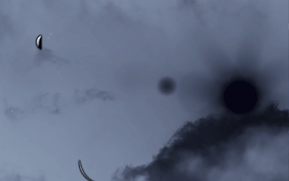
Agnieszka Zimolag
Amsterdam. The Netherlands
https://vimeo.com/171637057
Project: Phantom Surface
The movie phantom surface blurs the border between the real and virtual. while being embedded within the reality of the screen surface the body shifts from the physical presence to its virtual counterpart and the border between the two has become blurred. at one point they exist simultaneously. the difference between artificial and organic surfaces, ephemeral and tangible ones, has disappeared. they have all become part of a reality that is being constructed between me and the hardware and software that i use, guiding my perception of space and matter. human skin, and habitable space, have been shattered among diffused surfaces. cinematic shots of skin meet sublime, coveted technological objects. it is no longer clear which one feels more intimate and familiar, and which doesn’t. together, they open up a visceral hyper-real space of identity.
tag: artificial life
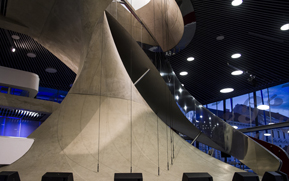
Kosmas Giannoutakis Graz. Austria http://www.kosmasgiannoutakis.eu/
Project: Sonic Current
Sonic current is a site-specific sound installation which transform architectural locations into “conscious” agents. The transformation of the site into a body, with its sense organs (microphones) and actuators (loudspeakers), enable the site to articulate and manifest itself in an open dialogue with its visitors. Sounds from visitors, environment or other exhibited installations, captured as external stimuli by the microphonic “ears”, are distributed over a digital, audio rate artificial neural network. Inside the high-dimensionally dynamic, self-regulating network, sound circulates recursively in multiple recurrent layers, resulting to diversely fragile resonant frequencies, an equivalent of a wide spectrum of flickering colors. The network output is assigned to the loudspeakers, which radiate the neuronaly processed resonances back to the site. The visitors can identify basic similarities of their body with the installation (input-output causality, dynamic memory) and can interact by various ways. Aside the obvious insertion of unintended or deliberated sounds into the network, a passive presence or a movement of a human body in the site, will affect the filtering characteristics of the site and will drive the network dynamics to seek for a new delicate equilibrium. Sound, as information, electric current or organic fluids, is the precious vital substance that sustains “artificial life” on the site.
tag: artificial life
DAVID GUEZ France
http://www.kronos.money
Project: KRONOS, TIME CURRENCY
The KRONOS project is based on an increasing recognition that the financial system which governs our societies today no longer corresponds to our human and social realities. It has generated a crisis which continues to spread and which affects, with increasing speed, the majority of us. This affects us individually and collectively and reaches our states and nations. Under the sacrosanct principles of growth, borrowing and debt repayment over several decades, we find ourselves prisoners of the banking system and of its devious effects it has on our way of living and understanding the world.
Keeping the principle of a universal currency that remains an effective means to exchange goods and services, the Kronos project attempts to provide a response by modifying the exchange paradigm: Instead of basing the currency on inflation or deflation of an artificial value, it would be certainly more appropriate to substitute this value with the one which controls/governs these exchanges: human time.
This ‘human time’, which means the time spent to do or transfer/pass on something, should be the fundamental value, legitimate and universal.
The Kronos project therefore proposes the creation of a currency whose index is based on human time. Thus, a unit of that currency, one Kronos, corresponds to one hour spent on an activity by a person or a group of people.
This project would be feasible within the framework of a technical system that has the capacity to bypass the main intermediaries, i.e. the banking institutions.
Given its capacity to be global and universal, the internet is now the ideal place for the operating environment of Kronos. In fact, the latest technologies introduced by the Bitcoin currency and blockchain make it possible to imagine a completely decentralised and secure exchange system.
So, this oncoming/imminent revolution, which is bypassing the intermediaries and advocates collaborative exchange; this revolution which is altering the mediation arrangements and repositions human value amongst citizens; one that changes the production cycles and introduces a real understanding (in accordance with) of the planet’s resources and the needs of its inhabitants. This revolution needs to find an exchange unit which is fair, equitable, holistic and can build trust: the Kronos currency.
tag: digital communities
Kronman-Zingerle Linz. Austria http://kairus.org/portfolio/lets-talk-business/
Project: Let;s talk business
‘Let’s talk business’ is a 5-channel audio installation that enables the visitor to listen to Internet scammers who try to lure potential victims into advance fee payments. Their phone numbers were extracted from a Scam Email database, analyzed by country, and categorized by scam scheme. Once calling up, they had the chance to tell their persuasive stories. Using four SPAM-cans as listening devices the visitor can browse through the scam stories of once-in-a lifetime business opportunities, distant relatives beneficiaries, big lottery fortunes or helping the ones in need. The fifth SPAM-can gives the visitor the possibility to be connected with random scammers and put their persuasive abilities on a test.
Basic principles of Internet fraud can be traced back to the 16th centuries ‘Spanish prisoner’ scheme, where face-to-face persuasion was used to trick the victim into advance fee payments. With the development of new communication technologies, scam schemes were adopted to letters, telephone, fax and Internet. In many of today’s fraud schemes phone numbers play an important role. Fake businesses or personas can appear more legitimate and enables a faster, more personal contact to the victims. When scammers setup a fake email address at free webmail services like Gmail or Outlook, popular VoIP services like Google talk or Skype are included and can be used for free. These tools enable the scammers to hide their identities with fake names and bogus business websites. With the analysis of a sample probe of 374 Emails we wanted to see which business proposals are commonly used and how believable their proposals sound once we contacted them by phone.
tag: digital communities
Stanza UK
http://stanza.co.uk/Mind_Map/index.html
http://www.stanza.co.uk/
Project: Mind Map
This is a piece of net art, a poetic interpretation made using custom made computer code to create a software system that can been seen online through a browser. Data has become the medium of the age and it can be offers insight into the way our world is given shape and meaning.
In this case what we see are the paths traveled by all the books taken out of Milton Keynes library over the last five years. It appears as a 3d space, a hybrid map of the movements of the books to their destination. The books travel down roads and paths to roundabouts to peoples houses. The books are shown traveling to the postcode destination. This massive data visualization moves organically orbiting around the library at the center of activity. Its a hub of knowledge spreading through the town creating a new world.
There are 160,000 books in the massive data visualization system.
Commissioned by Milton Keynes Libraries and funded by Arts Council England as part of The Digitalis Programme.
tag: data visualization
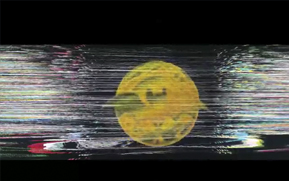
Goh Uozumi
Japan Project: New Order / Siren Call?
My URL is still secret, please don't share it.
New Order / Siren Call?" shows existence and mechanism of cryptocurrency as the origin of new order. Our society will get the order by decentralized autonomous information governance system which was born form cryptocurrency such as Bitcoin.
tag: data visualization
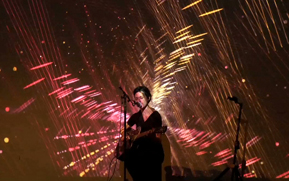
Jean-Michel Rolland France http://franetjim.free.fr/vjing
Project: Interactive Vjing
Vjing by Jim Rolland is highly innovative : the images he projects are programmed on Processing and are manipulated in real time on the music of the artist he plays with.
But it's above all an immersive Vjing where interactivity plays a key role by giving the sound control on the image : the projected forms only exist and evoluate in space thanks to the decibels received by the algorithms of the program.
tag: data visualization
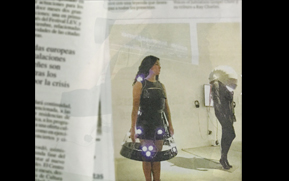
María Castellanos y Alberto Valverde
Gijón. Spain
http://www.environmentdress.org/
Project: Environment Dress (backpack)
Environment Dress es una plataforma para la creación de wearables en código abierto que midan la agresividad del medio que nos rodea, relacionando factores medioambientales como cantidad de monóxido de carbono, cantidad de polvo en el ambiente, radiación infrarroja, etc con nuestro estado de ánimo y estableciendo de este modo mapas emocionales de las ciudades a partir de los datos recogidos.
Environment Dress se inicia en 2015 gracias al premio Next Things 2015-Conducta, convocado conjuntamente por Laboral Centro de Arte en Gijón y Telefónica I +D en Barcelona.
María Castellanos y Alberto Valverde, que ya llevaban trabajando como colectivo desde 2009 en la intersección entre el humano y la máquina disfrutan, gracias al premio Next Things de una residencia de seis meses de duración repartida entre Gijón y Barcelona, durante la que desarrollan dos vestidos inteligentes y una App que permite tanto configurar el vestido como visualizar los datos medioambientales
tag: software art

